Saving Whidbey
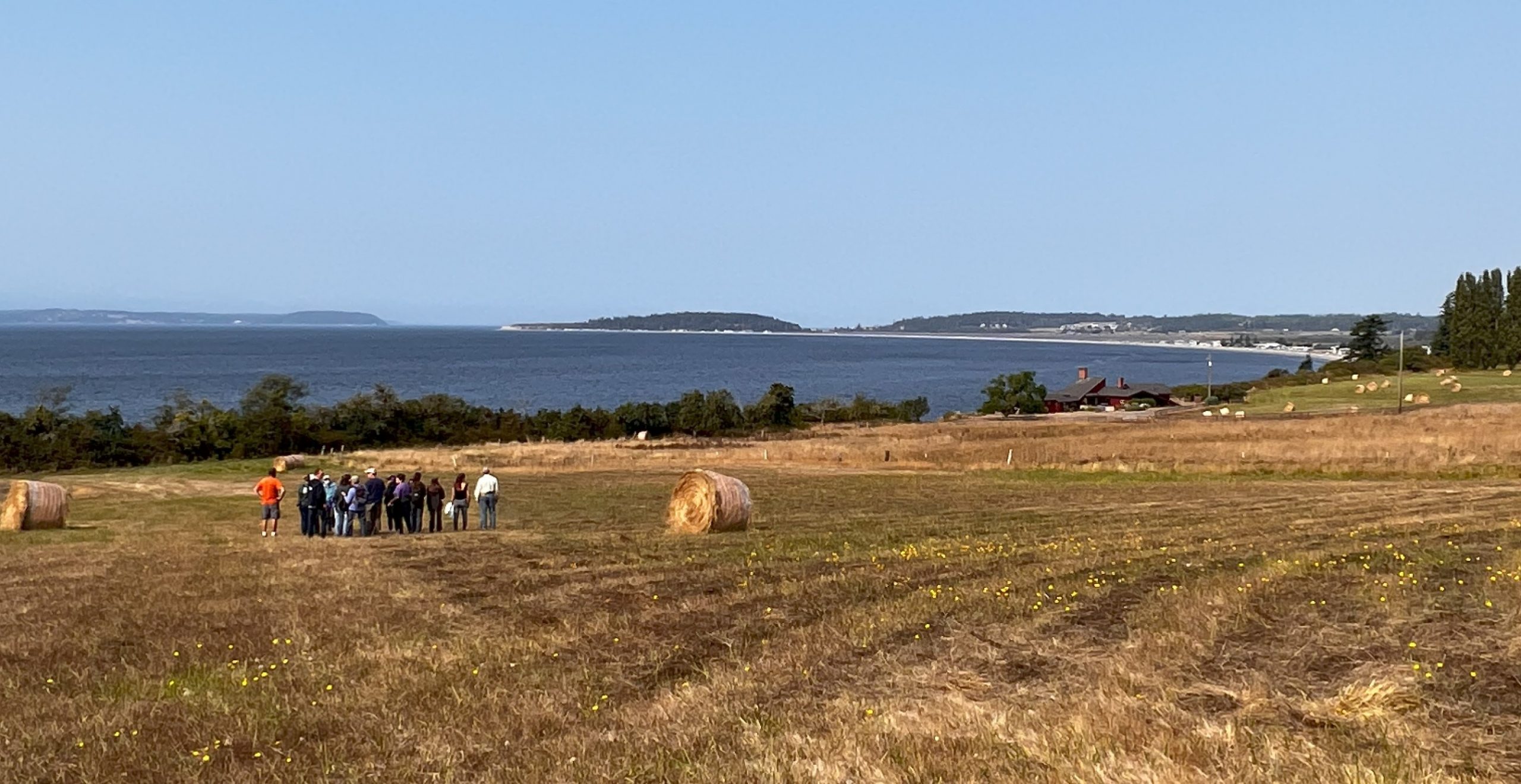
“One of the reasons most people find Whidbey Island so special is the beaches, forests, and farms. This is why having one of the most spectacular properties on the island that incorporates all three being protected forever is such an amazing thing!”
You’ve probably seen them, yet another of Whidbey’s gravel driveways that reach off from the highway, winding through a forest, to – well, someplace only a few know about. They are mysteries, but someone saw some reason to build a road. Sometimes that’s for an estate, or a farm, or simply a view. The Land Trust just acquired one of those properties that has all three.
Saving Whidbey
“What can I do to help protect the island?” That’s the question one realtor asked during a tour of Keystone Farm and Forest Preserve. They asked a good question to the right people because Whidbey Camano Land Trust helps people do that. A group of Windermere realtors were fortunate enough to get an early tour of Keystone Preserve, one of the Land Trust’s most recent acquisitions – and most impressive properties to protect.
History of the Land
For over a century, the land has been farmed with conventional methods (longer than that by Salish Sea Tribes). For decades, one family owned the property. They asked that same question; what could they do to save a farm with an expansive view because of 2/3 of a mile of waterfront. And it has dozens of acres of prairie farmland. And it has dozens of acres of forest upland from the shore. They add up to over 200 acres of a unique estate. Thanks numerous state and federal grants (including help from the Navy), some fortunate situations, and a bit of good luck, Keystone Farm and Forest Preserve will continue to be farmed and preserved.
Most of the folks on the tour were stopped in their tracks by the view as the long driveway rounded the bend from forest to farm, from trees to pastures, and expansive water views. Look left down Admiralty Inlet. To the right is Admiralty Cove. Straight across is the Olympic Range, Port Townsend, and out to the Strait of Juan de Fuca.
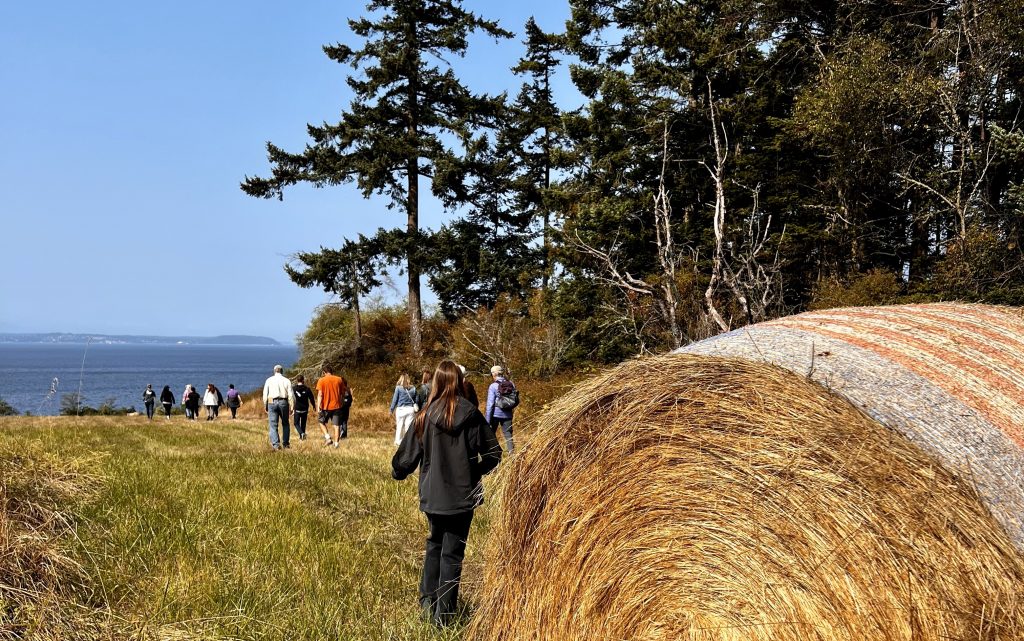
In April 2022, the Lea family sold the property. They had owned the property since 1947, but families shift, and they realized that they’d rather let someone else own and use it than leave it effectively vacant, locked away without anyone being able to enjoy it. The Land Trust stepped in, with help, of course. In a couple of years, Keystone Preserve will be opened to the public. Patience is necessary because a driveway that suffices for a family and a farm isn’t enough for two-way traffic, especially if emergency vehicles need access. The plan is to have parking for school buses and a shelter for learning.
There’s history here. The water, the prairie, and the forest are fertile. The Skagit people knew its value. They even maintained the prairie through controlled burns. The open land that reaches down to the water was so distinctive that early explorers noted it. One ship’s Captain, Robertson, returned and helped homestead it circa 1850.
A Budding Future
The future is also being established because the Organic Farm School has already been invited to plant trial fields. And, of course, it will be a place for people to enjoy. It is the nature of the Land Trust that the future can be preserved. That era has already begun.
That’s the plan. Plans require action, so sign up with the Land Trust to volunteer. The quicker the work gets done, the sooner people can visit for the sake of visiting. In the meantime, volunteers get early access to the views. Old farms are fertile, so there will be some weeds to tend. As the site gets prepared for the public, there will be opportunities to help. Maybe linger a bit after the work party is done.
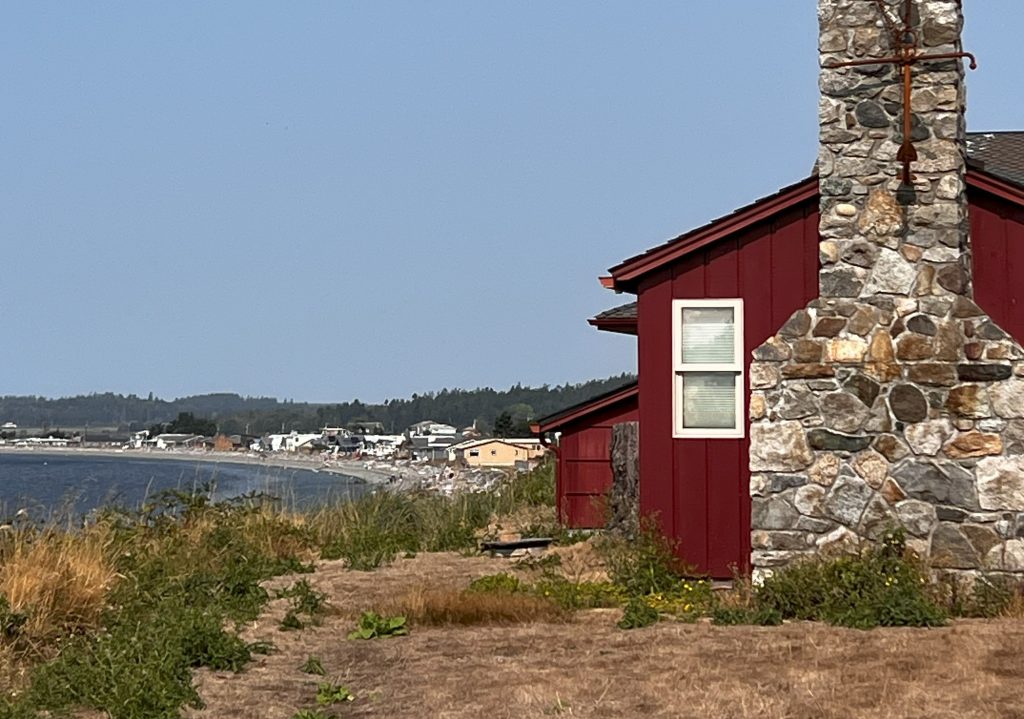
Find a comfy spot and watch for raptors overhead, whales and seals and salmon, and almost every big ship that’s using Puget Sound to get to our deep, sheltered harbors. Or get up and wander along the forest trails.
The property is also a place to learn about what it takes to live on the land on an island. Sites that look ideal can require a bit of research, thought, and consulting with experts. How close can a house be to the water, considering waves that can redistribute a bluff? Upland forests grow because they have access to water, which might mean ravines or wetlands. Owning such a property is also a lesson in how forests collect and filter rainwater, as well as stabilize bluffs and replenish our aquifers. Sometimes, trees may be weak or in a dangerous spot; but, it was pointed out that trimming the difficult parts while leaving the bottom thirty feet provides some of the benefits of habitat and soil stability. Learning about such issues by visiting a property is simpler than doing so in the middle of a transaction.
The land will restore something closer to its original nature, and it can be valuable to see natural forests, natural bluffs, and natural shorelines. The Land Trust doesn’t buy land to simply buy land. Keystone Farm and Forest Preserve will help the health of the habitat for lots of wildlife, particularly salmon and other fish that rely on eelgrass and bull kelp. It will provide a place for learning and demonstration. Protecting land also means protecting our drinking water by ensuring we have pockets of aquifer recharge.
The day of the visit ended with a show of seals and salmon along the shore.
People on Whidbey are proud of its rural character; so, preserving a farm, a forest, and a shoreline makes sense. “What can I do to help protect the island?” Be like the Lea family and think of the future.
“It will be a great place for people to learn about organic farming practices, how to manage private forests for health, natural shoreline protection techniques, and an additional beautiful and scenic place for walking. You can learn more about this property and all the Land Trust properties on their website. Loads of their properties are open to the public with great trail systems.” There’s probably one near you that you didn’t even know existed!
Whale Park in Langley
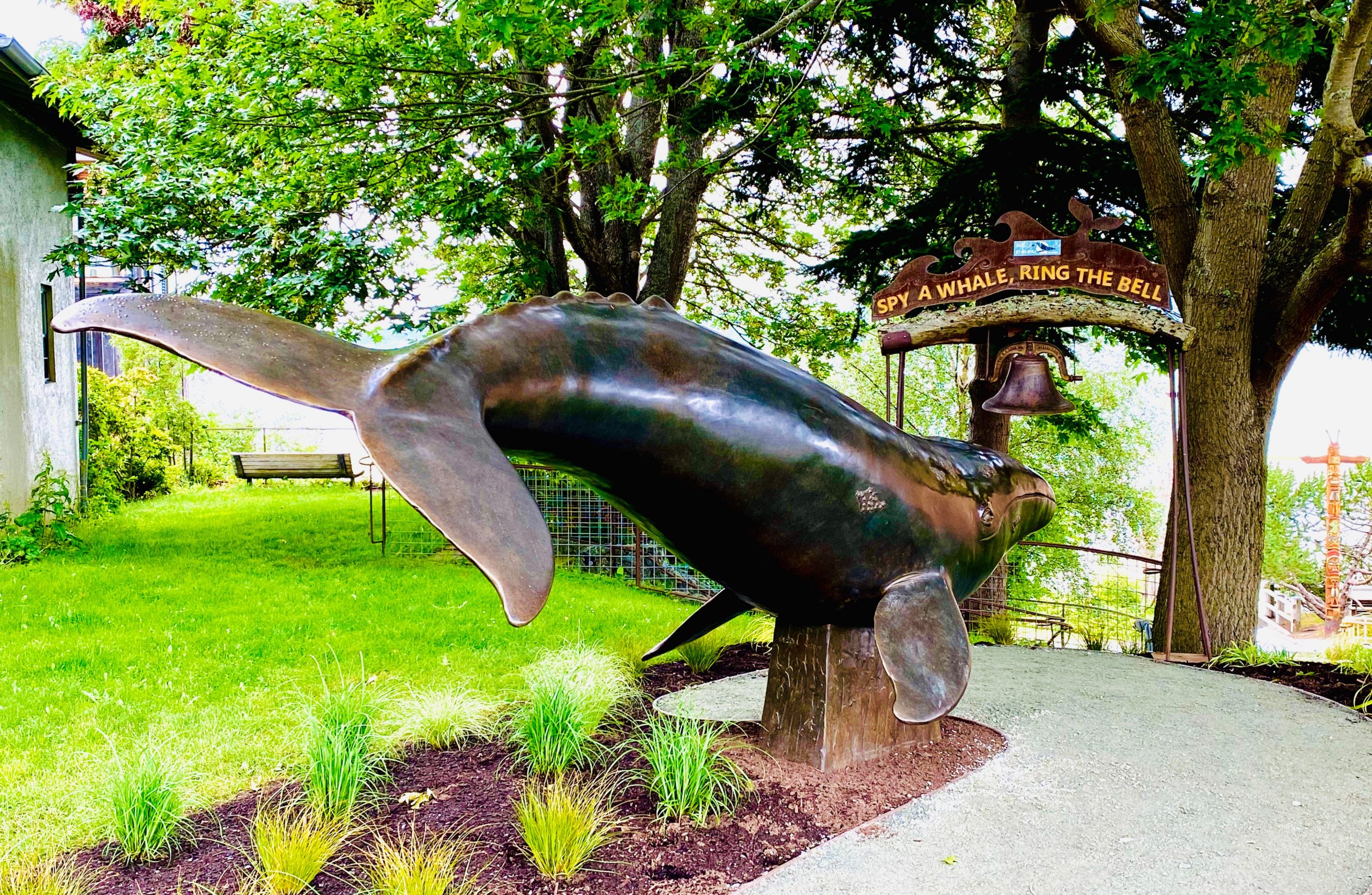
Have you heard the whale bell ring while in Langley in the spring? While that is a nice rhyme it is also a legitimate question. Every spring gray whales feed off ghost shrimp in the muddy shallows just off the shore. If you are lucky, they will come right up to the seawall! The bell and “Hope the Whale” are the stars of this iconic park. What some people miss is that the blowholes in “Hope” are there to collect money to fund ADA modifications to improve access to Seawall Park below. This will help everyone see the whales when they arrive. Bring your coins and listen to the clang!
Check out the rest of Whidbey’s beautiful destinations from this series here.
Coupeville Waterfront
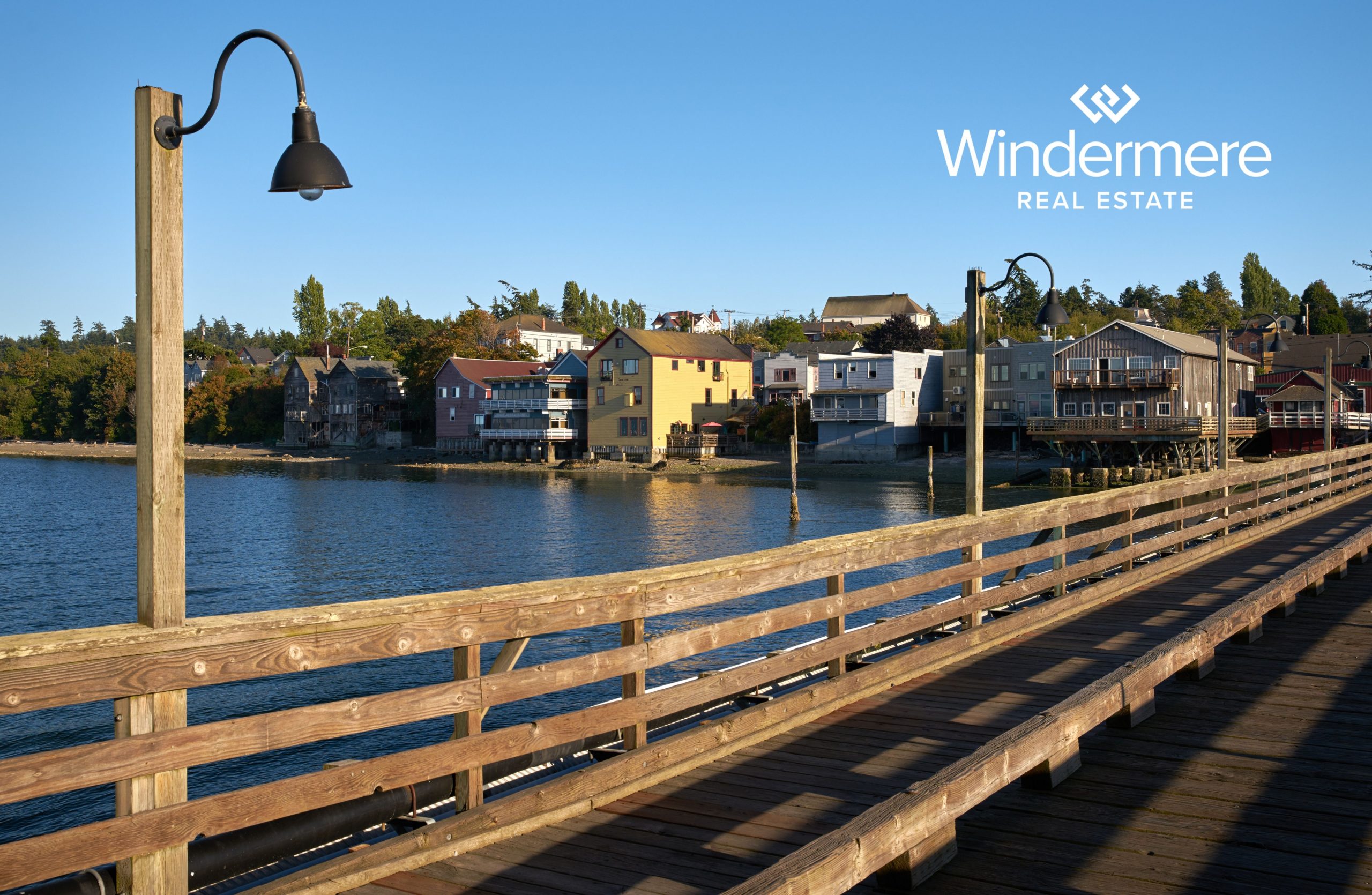
Long before European Explorers discovered Whidbey Island, Penn Cove hosted one of the largest native populations in the region. The Coast Salish People used the well-protected cove with easy access to the rest of Puget Sound for ample trading opportunities while the nearby prairie produced bountiful crops. As settlers came, Coupeville remained the central trading location on the island and by 1881 was the Island County government seat. The town prospered due to shipping fish, produce, lumber, and timber to the mainland via the Coupeville Wharf. Unlike many other historical towns, Coupeville’s historic waterfront buildings remain remarkably intact.
Check out the rest of Whidbey’s beautiful destinations from this series here.
Ebeys Landing
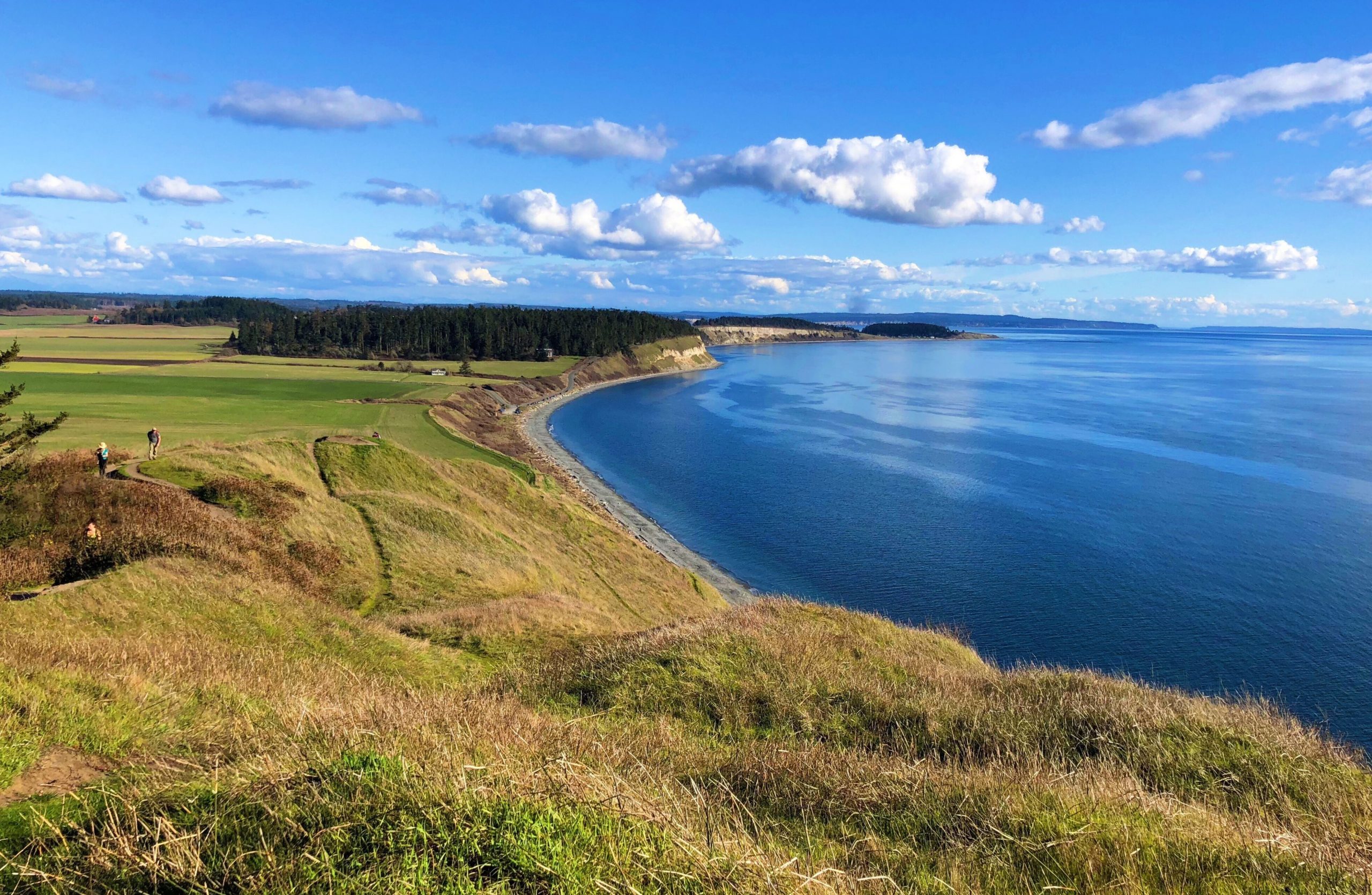
In 1850, local history was made on the shores of Whidbey Island when Isaac Ebey landed on a rocky westside beach and became the first official white settler on the island. With an entire island to choose from, Ebey couldn’t have done much better than the pristine pastureland of what is now known as Ebey’s Landing. This brilliant landscape is situated right at the southwestern side of Coupeville and features breathtaking views of Puget Sound and the Olympic Mountain range. The landing’s soft rolling hills blanketed in rich soil—perfect for cultivating crops—was this area’s true draw to its original settler. Today this landscape remains largely unchanged from the early days of settlers thanks to Ebey’s Landing Reserve. It’s the perfect place for a long walk to get lost in the life of the past.
Check out the rest of Whidbey’s beautiful destinations from this series here.

 Facebook
Facebook
 X
X
 Pinterest
Pinterest
 Copy Link
Copy Link
